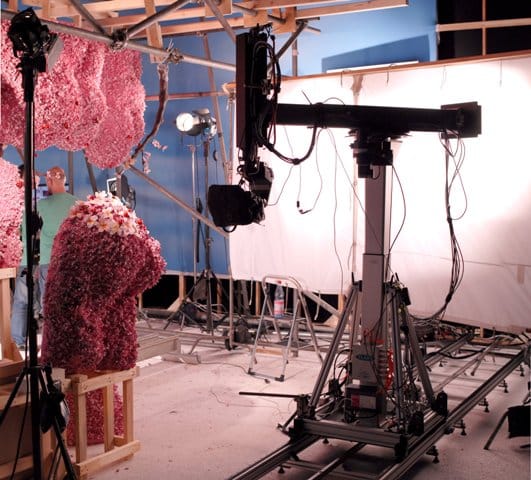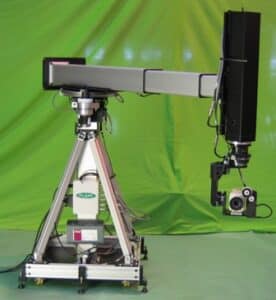Animoko making of, Sandman and the Lost Sand of Dreams
Animoko making of, Sandman and the Lost Sand of Dreams
Julian Hermannsen from Visual Distractions Ltd. worked as the Motion Control and Visual Effects Supervisor on the recently released German stop-motion feature, The Sandman and the Lost Sand of Dreams produced by Scopas Medien. From the outset it was clear that the five-month principal photography was going to be tight, so efficiency and creative solutions to keep both deadlines and quality were top priorities.
The shoot involved 21 units (18 active) in a 2,500 square meters studio space in Babelsberg Studios near Berlin and more than 100 crew members from all over Europe. The movie was shot on Canon 5D MKII. There were several motion control systems in use, from simple rotation plates or linear rails up to complete 6-axis systems, the Animoko/Flair system from MRMC being the most versatile of them.

Apart from the regular shooting of passes for animation, clean plate and tracking for the camera moves, one of the main challenges was the amount of heavy flying objects (cars, planes, boats, helicopters). With movement and rotation on 6 axes this turned out to be impossible to rig for the animators and to light in the small unit size of mostly 6 x 8m. A setup with the Animoko and another moco system was used in combination to realise these shots.
The animation was done in 3ds Max and then translated to the object using custom software tools. The rotation part was split off and imported into a 6-axis model mover to assure realistic lighting changes, while the spatial movement was imported into Flair to be shot with the Animoko. Using this setup it was possible to animate and prepare one shot in 3d, while another one was being shot by an animator animating the characters on the vehicles.
The Director, Sinem Sakaoglu said the following, “This set up facilitated the communication with my team because I was able to see the movement before the animator even walked on the set. I can’t imagine having done this shoot without such a system.”

The 3d import functions was also used on the opening shot, a 45sec camera move flying over a landscape of clouds. The move was created in 3d as one move and then cut into three pieces. The three parts were dressed and shot in the same unit consecutively and put together as one seamless shot.
The Animoko was perfect not only because it was compact enough to fit in the small units and easy to program but also allowed for all the more complex functions of the bigger systems like spatially offsetting/scaling moves which were even used mid-shot to compensate for overnight set shifts.
